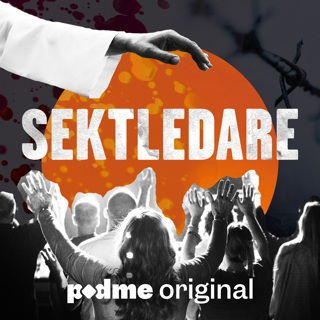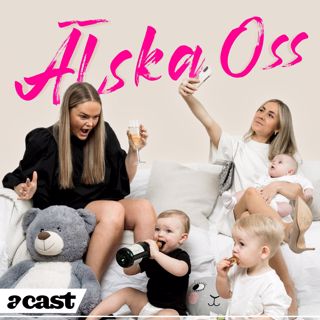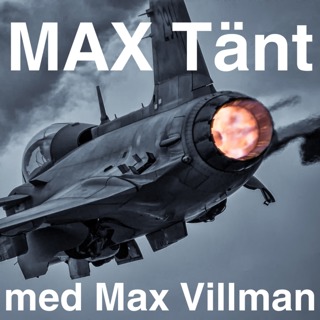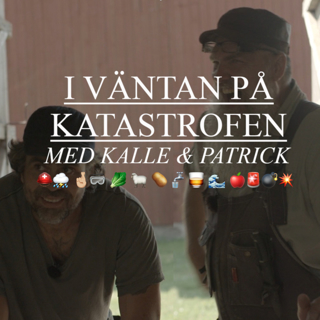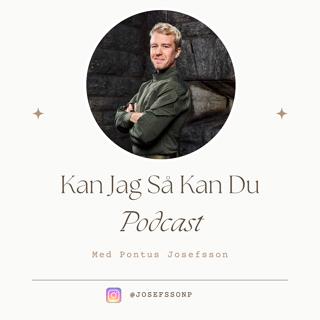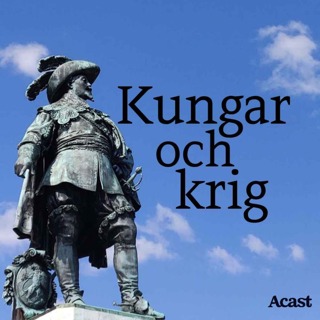
Ep. 568 Understanding CON Laws: Effects on Rural Cardiovascular Care with Dr. Ash Sastry and Dr. Sree Nair
What does it really take to bring cutting-edge vascular care to the most underserved corners of the rural South? In this episode of the BackTable Podcast, host Dr. Ally Baheti welcomes interventional cardiologist Dr. Ash Sastry and interventional radiologist Dr. Sree Nair to discuss the financial and regulatory side of providing care to underserved rural populations in North Carolina, Virginia, and Georgia.---SYNPOSISThe doctors delve into the operations and challenges of running an office-based lab (OBL) and the potential transition to an ambulatory surgical center (ASC). This episode covers topics like certificate of need (CON) laws, reimbursement issues, and the importance of multidisciplinary collaboration. The conversation offers insights into the practical and regulatory hurdles faced in delivering high-quality vascular care in rural settings. ---TIMESTAMPS00:00 - Introduction02:14 - Challenges in Rural Healthcare09:00 - Understanding Certificate of Need (CON) Laws11:30 - The Financial Struggles of OBLs19:58 - Advocacy and Legislative Efforts27:53 - Future Prospects and Final Thoughts
29 Aug 34min
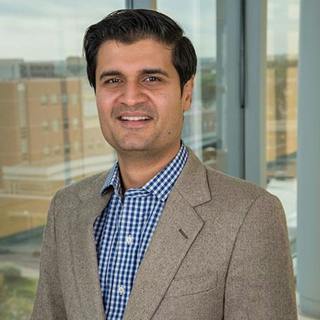
Ep. 567 How to Manage Biliary Strictures with Dr. Premal Trivedi
What piques your clinical suspicion for biliary structure? And when is interventional endoscopy the preferred approach? Fine tune your diagnostic and treatment algorithm with Dr. Premal Trivedi from the University of Colorado and host Dr. Christopher Beck as they go in-depth on the management of biliary strictures.---This podcast is supported by:RADPAD® Radiation Protectionhttps://www.radpad.com/---SYNPOSISThe doctors first break down the signs and clinical picture that alert them to a possible biliary stricture. Dr. Trivedi then explains the steps of his workup and preferred imaging, and also describes his threshold to pursue percutaneous transhepatic cholangiography (PTC), especially in diffuse conditions like primary sclerosing cholangitis. Dr. Trivedi also walks through his procedural steps for PTC and drain placement, covering his best practices and typical intraoperative decision making.Dr. Trivedi then explains the role of angioplasty over the course of longitudinal treatment, balloon choice, and his upper limit of catheter upsizing. The doctors also delve into the role of interventional endoscopy and tackling complications such as bleeding and tube leakage. The conversation offers valuable insights for trainees and practitioners alike, and highlights future advancements in biliary interventions.---TIMESTAMPS00:00 - Introduction06:19 - Approach to Biliary Strictures08:10 - Workup and Imaging for Biliary Strictures20:41 - Accessing the Biliary System27:14 - Crossing the Obstruction: Next Steps33:22 - Endoscopic Evaluation and Its Role47:14 - Complications and Pain Management53:40 - Future of Biliary Management54:55 - Conclusion and Final Thoughts
26 Aug 57min

Ep. 566 Navigating the Private Equity Practice Setting with Dr. Oleksandra Kutsenko
As new graduates enter the workforce, what are the key differences between academic, private, and hybrid practice models? Dr. Oleksandra Kutsenko, Chief of Interventional Radiology at Red Rock Radiology Associates, joins host Dr. Ally Baheti to discuss her experiences working in a private equity group in Nevada.---This podcast is supported by:Medtronic Emprinthttps://www.medtronic.com/emprint---SYNPOSISDr. Kanko discusses her career trajectory, her experiences with private equity, and the benefits and challenges of working in such a setting. She highlights the value of stepping into leadership roles, cultivating a versatile skill set, and navigating the complexities of working within a large, multifaceted organization like Radiology Partners. The conversation covers day-to-day operations, educational opportunities, and her perspective on balancing clinical work with administrative responsibilities. She emphasizes the importance of investing early in one’s career to build credibility and establish a lasting presence.---TIMESTAMPS00:00 - Introduction01:50 - Career Journey and Challenges03:15 - Private Practice vs. Academics07:11 - Daily Life as an Interventional Radiologist12:19 - Involvement with RAD Partners13:42 - Educational Tools and AI in Radiology24:08 - Clinic Operations and RVU Discussion31:59 - Advice for Trainees and Career Insights33:13 - Conclusion and Final Thoughts
22 Aug 35min

Ep. 565 Resorbable Embolics in MSK Embolizations with Dr. Keerthi Prasad
Resorbable embolics are gaining traction in musculoskeletal interventions, but what are the key technical considerations? Dr. Keerthi Prasad, interventional radiologist at the Centers for Pain Control and Vein Care joins host Dr. Ally Baheti to share practical insights when using resorbable embolics in MSK interventions.---This podcast is supported by:OBL Marketinghttps://www.oblmarketing.com---SYNPOSISDr. Prasad opens the conversation with an overview of embolic agents used in MSK interventions—including Imipenem, Lipiodol, and Nexsphere-F—and shares practical insights into technique selection. He explores the nuances of working with various resorbable embolics, highlighting clinical cases from his personal experience. The discussion also highlights Dr. Prasad’s innovative approach to establishing an outpatient-based lab (OBL) focused on musculoskeletal interventions. Additionally, Dr. Prasad also offers insight into the expanding role of resorbable embolics in treating conditions such as knee arthritis, plantar fasciitis, and adhesive capsulitis. The episode ends with a call to broaden access to this evolving treatment.---TIMESTAMPS00:00 - Introduction01:55 - Outpatient Embolization and MSK Procedures04:20 - Resorbable Embolics in Joint Embolization04:52 - Available Resorbable Embolics in the US07:57 - Technical Insights on Using Resorbable Embolics15:18 - Patient Outcomes and Long-Term Durability22:24 - Future of MSK Embolization Techniques24:05 - Exploring New Applications for Resorbable Embolics27:30 - Innovative Procedures and Techniques37:00 - Final Thoughts and Advice for Practitioners
19 Aug 40min

Ep. 564 Pressure-Enabled Drug Delivery in HCC & Metastatic Liver Lesions with Dr. Zach Berman
Can you manipulate blood flow in the tumor microenvironment to optimize drug delivery? In this episode of the BackTable Podcast, interventional oncologist Dr. Zachary Berman (UC San Diego) joins host Dr. Christopher Beck to discuss real-world applications of pressure-enabled drug delivery in locoregional liver-directed therapies like TACE and Y90.---This podcast is supported by:TriSalus Life Scienceshttp://trinavinfusion.com/---SYNPOSISThe conversation begins with an overview of the tumor microvascular environment, focusing on the abnormal nature of the new vessels that feed tumors. They then discuss the genesis of pressure-enabled drug delivery and the theory behind its efficacy. Dr. Berman explains the TriNav catheter’s micro-valve design, its anti-reflux properties, and how these features enhance tumor drug delivery. He walks through his own procedure technique, comparing and contrasting it to standard embolization, and details the utility of pressure-enabled drug delivery in lobar radioembolization and larger tumors. They also explore the benefits of both balloon occlusion and microvalve catheters.Real-world cases—including neuroendocrine tumors, segmental HCC, and more—illustrate the thought process around when to use specialized technologies. The episode wraps up with a discussion of the future implications for this technology in other pathologies, cost considerations, and the potential for enhancing drug delivery with innovative approaches.---TIMESTAMPS00:00 - Introduction01:39 - The Tumor Microenvironment06:59 - Pressure-Enabled Drug Delivery Explained09:37 - Technical Aspects of Pressure-Enabled Catheters21:48 - Case 1: Grade 3 Neuroendocrine Tumor34:06 - Case 2: Hepatocellular Carcinoma with Tumor and Vein36:01 - Case 3: TACE for Segmental HCC in Decompensated Cirrhosis38:58 - Case 4: Large Heterogenous Cholangiocarcinoma40:40 - Case 5: Lobar Neuroendocrine Tumor42:38 - Case 6: Segmental HCC with Central Necrosis47:52 - Best Practices and Technical Considerations57:52 - Future Directions in Pressure-Directed Embolotherapy59:48 - Conclusion and Final Thoughts---RESOURCESJVIR 2024 Jaroch et al.:https://pubmed.ncbi.nlm.nih.gov/38969336/
12 Aug 58min
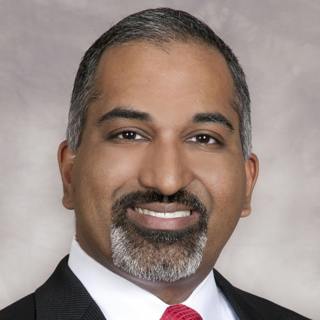
Ep. 563 Techniques for Effective Vessel Prep with Dr. Jay Mathews and Dr. Michael Siah
The toolbox for vessel preparation is rapidly expanding. Are you keeping up? In this episode, host Dr. Sabeen Dhand is joined by Dr. Jay Mathews, interventional cardiologist (Manatee Memorial Hospital) and Dr. Michael Siah, vascular surgeon (UT Southwestern), to explore the latest innovations and strategies in vessel prep. --- This podcast is supported by: Cagent Vascularhttps://cagentvascular.com/ --- SYNPOSIS The discussion opens with a look at new additions to their practice over the past few years, including bioresorbable scaffolds for below-the-knee interventions and retrievable stent technologies. Both experts emphasize the role of imaging—particularly CT angiography and IVUS—and discuss how renal disease impacts their use of contrast during diagnosis and intervention. They then walk through how they assess vessels on angiography or IVUS to decide when and where to use specialty tools. From intravascular lithotripsy for managing dense calcification to serration angioplasty, the conversation highlights how the doctors decide to use specialty balloons and devices. The episode also touches on the practical challenges of balancing device cost with treatment effectiveness. The physicians break down the latest specialty balloons and devices and touch on their own experiences with them. To close, the guests share what emerging technologies they’re most excited about and how these devices could change their day-to-day practice. Whether you’re in IR, cardiology, or vascular surgery, this episode offers a valuable roadmap to the current and future state of vessel preparation. --- TIMESTAMPS 0:00 - Introduction4:07 - New Changes in Techniques14:57 - Vessel Characteristics on Angiogram18:10 - Approaches to Above-the-Knee vs. Below-the-Knee Disease23:48 - Latest Specialty Balloons46:14 - New Devices on the Horizon50:58 - Words of Advice and Final Thoughts --- RESOURCES POINT FORCE Registry: https://evtoday.com/news/cagent-initiates-point-force-registry-of-serranator-pta-catheter?c4src=news
5 Aug 55min
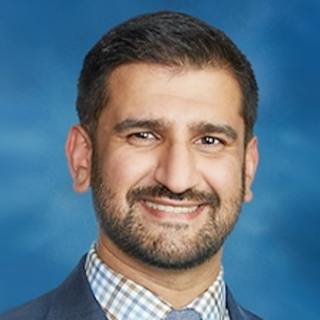
Ep. 562 IR as a Business Engine: Scaling High-Acuity Care in Private Practice with Dr. Harris Chengazi
What are the key elements of a robust interventional radiology practice, and how can IRs effectively demonstrate their value to hospitals? Guest, Dr. Harris Chengazi, interventional radiologist at Great Lakes Medical Imaging, joins host Dr. Sabeen Dhand to explore the core strategies behind developing a successful and sustainable clinical IR practice. --- This podcast is supported by: RADPAD® Radiation Protectionhttps://www.radpad.com/ --- SYNPOSIS Dr. Chengazi reflects on formative experiences from the early stages of his career, highlighting the importance of joining a group that shares your vision for a clinical interventional radiology (IR) practice. He underscores the unique value IR offers hospitals—particularly through longitudinal patient care, which not only enhances reimbursement opportunities but also strengthens interdisciplinary collaboration and drives outpatient referrals.He shares insights on balancing complex cases with essential procedures, while underscoring the importance of clear communication and articulating IR’s value to hospital leadership. He also highlights the critical need for physicians to understand the business side of medicine—including coding, billing, and reimbursement—in order to effectively advocate for the specialty. He concludes the episode with a compelling message on the importance of taking ownership of both our patients and the future of our profession. --- TIMESTAMPS00:00 - Introduction and Overview01:55 - Building a Private Practice05:22 - Challenges and Successes24:58 - The Value of Complex Cases in Medical Practice27:00 - Improving Hospital Efficiency Through IR Services29:18 - Involvement of IR in Hospital Administration31:26 - Building a Successful IR Practice36:14 -The Financial Dynamics of IR and DR Practices41:14 -The Essential Role of IR in Hospital Operations
1 Aug 54min

Ep. 561 Dosimetry University VI: Challenging Case Review with Dr. Tyler Sandow and Dr. Zach Berman
When is Y90 the right treatment for metastatic disease? Join Drs. Tyler Sandow, Zach Berman and host Kavi Krishnasamy in the conclusion of Dosimetry University where they discuss the complexities of treating different variations of metastatic disease and review how they’ve approached complicated cases with Y90. --- SYNPOSIS The interventional oncologists first outline the types of metastases that they treat, including colorectal, lung, cholangiocarcinoma, breast, gastric, RCC, and melanoma. The doctors then discuss the potential for Y90 to provide palliative relief by reducing tumor-related pain. The conversation also covers key differences between treating liver-dominant and liver-only disease, along with their algorithm for patients not on systemic chemotherapy.The episode then covers advanced concepts in Y90, such as sub-ablative dosing, the possibility of creating an abscopal effect, and how radiation thresholds change depending on treatment goals. They outline their approach to partition dosimetry, using SPECT/CT to calculate tumor-to-normal ratios, and explain how they modify particle counts and microsphere activity, using flow augmentation based on tumor vascularity. Additional discussion includes the impact of mutation status, prior lines of chemotherapy, and tumor response criteria like RECIST 1.1 and mRECIST. The experts conclude with a case series that illustrates decision-making around when to consider Y90, thermal ablation, TACE, or alternative approaches—even in complex cases like sphincter of Oddi dysfunction. The session underscores the nuanced nature of advanced dosimetric techniques and the evolving landscape of interventional oncology. --- TIMESTAMPS 00:00 - Introduction 01:30 - Types of Metastases Treated with Y9002:50 - Liver-Dominant vs. Liver-Only Disease 07:20 - Sub-Ablative Dosing and the Abscopal Effect09:55 - Tips for Partition Dosimetry 15:30 - Clinical Factors in Treatment Planning23:50 - Choosing Ablation, Resection, or Y90 for mCRC30:27 - Case Series: Colorectal Metastases, Biliary Complications, and more46:00 - Final Thoughts: The Evolving Field --- RESOURCES RECIST 1.1 and mRECIST Criteria:https://pmc.ncbi.nlm.nih.gov/articles/PMC9161105/ COLLISION Trial:https://ascopubs.org/doi/10.1200/JCO.2024.42.17_suppl.LBA3501 BackTable Episode on COLLISION Trial:https://www.youtube.com/watch?v=NQLKcv1BRVM FOXFIRE, SIRFLOX, FOXFIRE-Global:https://www.thelancet.com/journals/lanonc/article/PIIS1470-2045(17)30457-6/fulltext
29 Juli 48min







